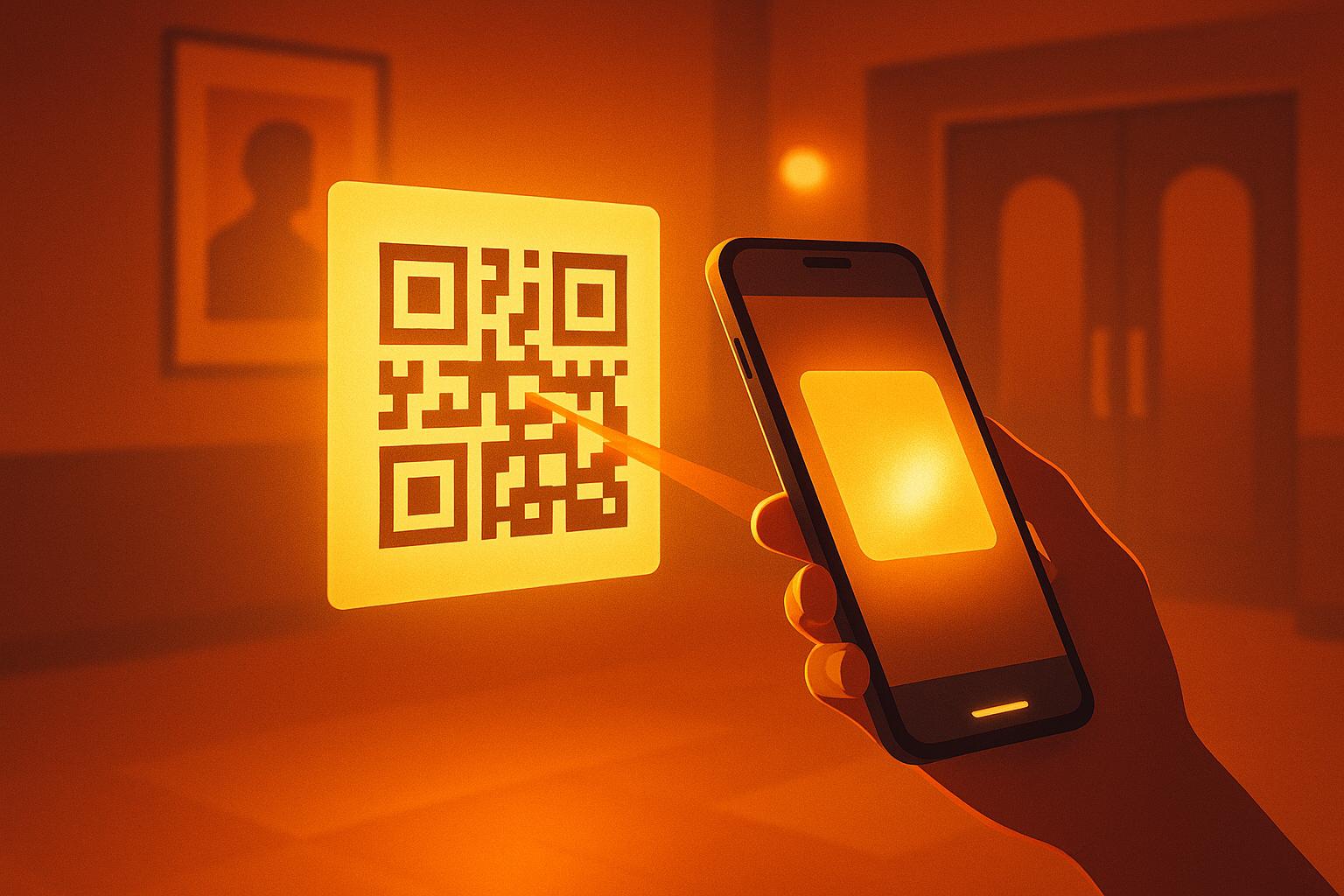Designing a user-friendly mobile app for movie theater ticketing can be tricky to get right.
By focusing on core principles of user experience (UX) design and research, you can create an intuitive and enjoyable app for seamless ticket booking.
In this guide, we'll explore practical strategies for designing an app that meets the needs of moviegoers, from visual design to personalized engagement features.Utilizing real-world examples and case studies, you'll learn actionable tips to craft an exceptional user experience.
Introduction to Mobile Ticketing App Design
Designing a user-friendly mobile ticketing app is key for movie theaters looking to provide a seamless ticket purchasing experience. As consumers increasingly rely on mobile devices, having an app that makes booking and checking in efficient and straightforward is essential.
The Significance of Mobile Ticketing in the Digital Age
Mobile apps have become the preferred platform for accessing services and information on-the-go. For movie theaters, mobile ticketing provides significant advantages:
- Convenience - Customers can quickly buy tickets anytime, anywhere instead of waiting in line at the counter
- Flexibility - Seat selection and special offers can be easily accessed
- Data - Apps provide user data to help theaters understand customer behavior
As consumers gravitate towards mobile, a well-designed app is vital for movie theaters to keep up with changing consumer expectations.
Goals and Objectives of the App
The primary goals for a movie theater mobile ticketing app are:
- Enhance user experience - Intuitive design and seamless booking process
- Increase ticket sales - Convenient access drives more purchases
- Streamline operations - Mobile ticket integration improves theater efficiency
- Build customer loyalty - Personalized offers and rewards programs
Focusing on these core objectives during the design process ensures the app provides value to both customers and movie theaters. Keeping the end-user experience front and center leads to better engagement and long-term app success.
User Research and Audience Analysis
Analyzing the needs and behaviors of potential moviegoers is crucial for designing a mobile ticketing app that delivers an excellent user experience. Here are key areas to focus on:
Identifying the Moviegoer Persona
When designing a mobile ticketing app for a movie theater, it's vital to understand your target users. Create 2-3 moviegoer personas representing your main audience segments. Include details like:
- Demographics - age, location, income level
- Goals - convenience, finding showtimes, easy checkout
- Frustrations - complicated apps, hidden fees
Aligning features with moviegoer personas ensures your app solves real user needs.
Understanding User Expectations and Requirements
Conduct user interviews and surveys to capture expectations around:
- Ease of use - intuitive navigation and flows
- Functionality - browsing movies, selecting seats, payment
- Speed - fast checkout process
- Compatibility - iOS and Android
Document these as requirements to guide the design and development. Track which are essential vs. nice-to-have.
Analyzing Pain Points and Opportunities
Look at app store reviews and support tickets to uncover pain points with existing movie apps:
- Difficulty finding showtimes
- Complicated seat selection
- Unexpected fees during checkout
Identify these user problems as opportunities to improve and exceed expectations. Fixing pain points also drives positive reviews and referrals.
Thorough user research ensures your custom mobile ticketing app delivers an intuitive, seamless moviegoer experience - leading to more sales.
Designing the User Interface (UI)
Designing an intuitive user interface (UI) is crucial for a successful mobile ticketing app. The UI should make the key tasks of browsing movies, selecting seats, and purchasing tickets as smooth as possible.
Principles of Effective UI for Ticket Booking
Here are some key principles for designing an effective UI for mobile ticket booking:
- Simplicity - Avoid clutter and only include essential elements on each screen. Use clear icons and labels so functions are obvious.
- Consistency - Maintain consistent design patterns and flows across all screens. This builds familiarity for users.
- Feedback - Provide clear feedback after each user action so they know it was successful. This builds trust.
- Prioritize Key Actions - Make primary tasks like selecting a movie, reserving seats, and paying stand out visually on each screen.
- Responsive Design - Optimize UI for mobile devices and different screen sizes. Test on target devices.
Following these principles will create an intuitive flow where users can easily complete tasks.
Creating a Cohesive Visual Language
A cohesive visual language strengthens branding and improves UX by meeting user expectations. Considerations when designing:
- Color Palette - Limit colors and reuse them consistently, especially your brand colors.
- Typography - Establish primary and secondary fonts for headings and body text.
- Iconography - Create a custom icon set that aligns to your aesthetic. Reuse them.
- Layouts - Standardize spacing, sizes, and positioning of elements across all screens.
Maintaining harmony between these aspects establishes familiarity and enhances usability.
Accessibility and Inclusivity in Design
Accessible design ensures usability for people with disabilities. Some best practices:
- Add image descriptions for screen readers
- Support color contrast changes
- Design large tap targets
- Support screen magnifiers
- Allow text size adjustments
Inclusive design considers diverse user capabilities and limitations during planning. Building accessibility improves overall usability.
By focusing on user needs in the UI design, the mobile ticketing app can provide a streamlined booking experience that works for all moviegoers. This drives adoption and satisfaction.
Developing the User Experience (UX)
Prioritize must-have functionality like showtime browsing, seat selection and ticket management to fulfill core moviegoer needs.
Mapping the Ticket Ordering Flow for a Movie Theater
The key steps in the movie ticket ordering flow that the app should guide users through:
- Browse movies and showtimes
- Select movie, date, time, and number of tickets
- Select seats from an interactive theater map
- Enter ticket holder details
- Review order and payment options
- Complete payment
- Receive and store mobile tickets
The app should allow users to seamlessly navigate through these steps with clear indicators of their progress. Contextual help and tooltips can assist users if they get stuck.
Streamlining this flow to minimize taps, swipes, and data entry creates a frustration-free ticket buying experience.
Simplifying the Seat Reservation Process
The seat map interface is vital for user experience. Key UX considerations include:
- Intuitive visual representation of the theater layout
- Clear indicators of available, reserved, and selected seats
- Options to select preferred seats (aisle, middle, back rows etc.)
- Zoom and pan controls to inspect seats closely
- Real-time updates as seats are selected
- Contextual tooltip when hovering over a seat
Optimizing this interface allows moviegoers to quickly browse and reserve their desired seats.
Facilitating Easy Showtime Check-In
Hassle-free check-in is essential for app adoption. Useful features include:
- One tap check-in from the ticket dashboard
- Automatic check-in when entering geofence around theater
- Seamless ticket barcode scanning with alerts on success
- Intuitive re-scan process in case of errors
- Clear post-check-in instructions on theater entry
Prioritizing check-in convenience encourages continued app usage for future movie visits.
sbb-itb-b1b0647
Payment Integration and Security
Choose secure, convenient payment options tailored to your target audience.
Implementing Diverse Payment Options
Offering a variety of payment methods in your mobile ticketing app can enhance the user experience and lead to higher conversion rates. Here are some tips:
- Integrate popular third-party payment gateways like Stripe, Braintree, or PayPal to enable credit/debit card payments. This ensures PCI compliance.
- Consider adding PayPal, Apple Pay, or Google Pay to enable mobile wallet payments. These are convenient for users.
- Allow users to store card details for faster checkout in future purchases. Enable one-click payments.
- Offer gift card payment options to allow users to redeem cinema gift cards/vouchers.
- For advanced apps, incorporate QR code or NFC payments for contactless checkout.
By supporting diverse payment methods aligned with user preferences, cinemas can drive more ticket sales.
Ensuring Transaction Security
It's crucial for cinemas to prioritize security in their mobile ticketing app to build user trust:
- Comply with industry standards like PCI DSS for securing card data.
- Encrypt sensitive user data in transit and at rest. Consider tokenization.
- Incorporate features like 2FA or biometrics for account logins to prevent fraud.
- Display trust badges and security seals prominently in the checkout flow.
- Conduct regular audits and penetration testing to identify and fix vulnerabilities.
With robust security measures in place, users will feel more assured transacting in the cinema's app.
Streamlining the Checkout Process
An optimized checkout flow is essential for minimizing cart abandonment:
- Reduce the number of checkout form fields to only necessary ones like name, email, payment details etc.
- Set default values wherever possible - registered user details, saved payment methods etc.
- Allow guest checkout options for first-time users.
- Adopt a single-page checkout to complete payment details in one go.
- Clearly display ticket details including showtime, seat numbers, concessions etc.
- Send confirmation emails/texts with QR code tickets upon successful payment.
By refining the checkout user flow, cinemas can significantly increase transaction conversion rates.
Personalization and Engagement Strategies
Increase loyalty by providing customized recommendations and promotions.
Leveraging User Data for Tailored Experiences
Collecting user data ethically allows movie theaters to better understand customer preferences and offer personalized recommendations. Some ideas:
- Allow users to rate movies and save favorites to their profile. Use this data to suggest new releases they may enjoy.
- Track purchase history and movie viewing patterns. Recommend similar titles or complementary concessions based on prior orders.
- Let customers select preferred genres, actors, etc. Notify them of relevant upcoming releases.
- Analyze seat selection tendencies. Provide customized seat recommendations based on factors like viewing angle or proximity preferences.
Incorporating Loyalty Programs
Loyalty programs encourage repeat business and help cinemas foster meaningful relationships with customers. Considerations:
- Reward return visits by offering loyalty points, redeemable for concessions, tickets, or upgrades.
- Identify high-value patrons for special perks like members-only screenings or early access to blockbuster pre-sales.
- Send tailored promotions to loyalty members for personalized discounts on their favorite treats and genres.
Engaging Users with Interactive Content
Integrating interactive content into cinema apps boosts engagement:
- Allow users to view movie trailers, read reviews, and share showtimes on social media.
- Incorporate gamification by letting customers make predictions on review scores or opening weekend box office figures.
- Enable push notifications for show reminders, nearby movie deals, and updates on highly-anticipated upcoming releases.
App Analytics and Continuous Improvement
Continuously analyzing app usage data is critical for identifying issues and opportunities to improve the movie theater mobile ticketing app experience. Here are key areas to focus on:
Monitoring Key Performance Indicators (KPIs)
Define core KPIs to track the success of the mobile ticketing app, such as:
- Number of app downloads
- Number of tickets purchased through the app
- Conversion rate from app browse to ticket purchase
- Average time to complete a ticket purchase
Closely monitor trends for these KPIs in real-time to detect problems and identify improvement opportunities. For example, a drop in conversion rate may indicate issues with the checkout flow.
Utilizing User Feedback
Actively collect qualitative user feedback through:
- In-app surveys and ratings prompts
- App store reviews and ratings
- Social media monitoring
- Customer support interactions
Analyze user feedback to surface pain points and enhancement ideas. Prioritize addressing issues decreasing user satisfaction scores.
Benchmarking Against Competitors
Conduct a movie theater app competitive audit examining functionality, design, and performance of competing theater apps.
Key aspects to compare include:
- Core features offered
- User interface and experience
- Ratings and reviews
- KPIs like downloads and usage
This analysis identifies functionality and capabilities to emulate or avoid. Implement the best practices that could improve your app.
Continuously analyzing app data, user feedback, and the competitive landscape will highlight areas for improvement to create the best possible moviegoer mobile experience. This drives increased engagement, satisfaction, and ticket sales.
Case Studies and Success Stories
Movie theater owners face immense challenges when it comes to selling tickets and engaging audiences. Thankfully, custom mobile apps provide proven solutions, as highlighted in these real-world examples.
Analyzing a Movie Ticket Booking App Case Study
One regional cinema chain saw great success after launching a customized mobile ticketing app. The app enabled patrons to seamlessly browse showtimes, select seats, and securely pay for tickets on their phones. This led to a 15% increase in advance ticket sales in the first year.
Key factors that made this mobile ticketing app successful:
- Intuitive and attractive user interface optimized for quick ticket purchases
- Deep integration with the cinema's ticketing and concessions systems
- Targeted push notifications to drive impulse ticket buys
- Robust analytics to understand user behavior
By analyzing this case study, cinema owners can identify smart mobile app features to implement in their own theaters.
Learning from Seat Reservation App Successes
Certain movie theaters have excelled at seat reservation capabilities in their apps. For example, an art house cinema built an app allowing customers to select their favorite seats across all auditoriums. Patrons felt more engaged and bought more tickets to guarantee their preferred seats.
This app succeeded due to:
- Seat maps synced in real-time with the box office
- Seat selection workflows based on thorough user testing
- Allowing seat reservations without requiring ticket purchases
The seat reservation functionality kept patrons returning to the app and drove increased ticket sales over time.
Innovations in Showtime Check-In Apps
Streamlining the showtime check-in process via mobile apps provides a better customer experience. Apps that have successfully innovated in this area include:
- Apps that automatically check patrons in based on real-time location data. This eliminates queues and tickets altogether.
- Apps allowing patrons to preorder concessions for pick-up. This avoids missing the film's opening minutes while waiting in line.
- Apps that notify patrons when their film is about to start. This prevents late arrivals and disruptions.
These innovations illustrate how mobile technology can transform showtime logistics for the better.
By learning from these real-world examples, movie theater owners can confidently design mobile apps incorporating the most impactful features. This leads to greater ticket sales, happier customers, and sustained business growth over the long term.
Conclusion: Key Takeaways for Designing a Movie Theater App
Designing an effective mobile ticketing app for a movie theater requires focusing on key principles of user-centered design to create a seamless and convenient experience for moviegoers.
Recap of User Experience Design Principles
When creating a mobile ticketing app, it's important to:
- Understand moviegoer needs and pain points through user research and testing
- Optimize the user interface for simplicity, clarity, and ease of use
- Streamline booking and payment flows for faster checkout
- Provide accurate and up-to-date showtime information
- Enable advanced features like seat selection and reservation
- Integrate with loyalty programs and offer special promotions
By focusing on these core UX principles and the overall user journey, movie theaters can drive increased ticket sales, enhance customer satisfaction, and boost engagement through their mobile apps.
Final Thoughts on the Future of Mobile Ticketing
As mobile technology continues to evolve, so too will movie theater apps with new innovations to improve convenience and personalization:
- Integration with digital wallets for frictionless payments
- Personalized film recommendations and notifications based on viewing history
- Dynamic pricing and deals based on time of day, demand, etc.
- Enhanced reality features for an immersive booking experience
- Expanded platform support across devices and operating systems
There are exciting opportunities ahead for mobile ticketing. By continually optimizing for user experience and leveraging emerging technologies, movie theaters can future-proof their apps to stay competitive, maximize sales, and deliver outstanding service to moviegoers.


